|
APOPHIS
Real Name : Apopophis (possibly)
Occupation: God of chaos
Legal Status: Inapplicable
Identity: The general populace of Earth is unaware of the existence of
Apophis except as a mythological character.
Other Aliases: Aapef, Ap, Apap, Apep, Apepi (alternate names)
Place of Birth: Unrevealed, possibly Inapplicable
Marital Status: None
Known Relatives: None
Group Affiliation: None
Base of Operations: Mount Bakhu (somewhere in modern Morocco)
First Appearance: Apophis has yet to appear in Marvel or DC Comics
History: Not much is known about the origins of Apophis. According
to ancient myths, he came into existence with Atum-Ra,
the ancestor of the Gods of Egypt, much as Ahriman
came into existence with Ormazd.
Atum-Ra and Apophis often fought to gain control of the universe, but Atum-Ra eventually
defeated him, either slaying Apophis or driving him into exile in the
underworld. However, Apophis often attempted to return to Earth trying to attack
Atum-Ra, but he was always driven back through the efforts of Seth,
the god of the underworld, as he piloted Atum-Ra's boat on the Nile.
|

Height: Indeterminate
Weight: Indeterminate
Eyes: Red
Hair: None
Strength Level: Inapplicable
Known Superhuman Powers: Apophis is a huge serpent of indeterminate
size possessing superhuman strength, stamina, endurance and an nearly
inexhaustible physique capable of battling experienced gods like Atum-Ra for
several hours before tiring. Apophis may be able to summon forces of storm and
negative energies in the form of hexes and spells, but this is
unconfirmed.
|
|
CHIMERA
Real Name : Chimaera (original spelling)
Occupation: Predator
Legal Status: Inapplicable
Identity: The general populace of Earth is unaware of the existence of
the Chimera except as a mythological character.
Other Aliases: Chimaira (alternate spelling)
Place of Birth: somewhere in Arcadia (modern Greece)
Marital Status: None
Known Relatives: Typhon (father), Echidna (mother, deceased), Geryon
(uncle, deceased), Chrysaor (maternal grandfather), Calirrhoe (maternal grandmother), Cerberus,
Ladon,
Nemean
Lion, Orthrus
(brothers), Phaea, Sphinx
(sisters),
Group Affiliation: None
Base of Operations: Mount Olympos in Lycia in the 13th Century BC (now
part of modern Turkey)
First Appearance: Incredible Hercules #138
History: The Chimera is one of the progeny of Typhon and Echidna,
ancient deities within the genealogy of the
Gods
of Olympus. Although Typhon and Echidna seem to have been previously gods,
their off-spring had characteristics more like animals and dragons, possibly due
to their parent's animal-like forms or due to
Athena's
curse on Echidna's ancestor,
Medusa.
The Chimera was born with the heads of an lion and a goat and a tail that took
the form of a serpent. According to legend, she was raised by Amisodarus, an
ancient king of Lycia, and used to terrorize the surrounding countryside, but
she must have become too violent and fell out of the control of the later Lycian
kings, later terrorizing the countryside setting fires and destroying cattle. In
the Late 13th Century, King Iobates sent Bellerophon to slay the Chimera, and
with the help of Pegasus, Bellerophon tracked the Chimera to its lair and slew
it with enchanted arrows.
|
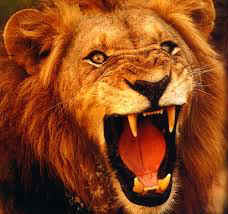
In modern years, the Chimera was covertly restored to life by Hades on behalf of
Hera. Following the decimation of Olympus, the Olympian Gods had retired to
Earth posing as human beings. After the seeming death of Zeus, Hera used the
Chimera to strengthen her hold over the other Olympians, but the Chimera was
once again slain by the Agents of Atlas after being forced to incinerate one of
its heads.
Height: 10' (estimated length)
Weight: Indeterminate
Eyes: Red
Hair: Brown/Silver
Unusual Physical Features: The Chimera
resembled a lion of extra-ordinary size with a tail ending with the head and abdomen of a snake and a second vestigial
head resembling a goat.
Strength Level: Inapplicable
Known Superhuman Powers: The Chimera possessed superhuman strength,
stamina, endurance and resistance to injury from conventional weapons.
It also had the ability to spew fire by igniting its breath and
expelling it up to forty to fifty feet from its mouth.
|
|
FENRIR
Real Name: Fenrir
Occupation: Predator
Legal Status: Inapplicable
Identity: The general populace of Earth is unaware of the existence of
Fenrir except as a mythological character.
Other Aliases: Fenris Wolf, Garm (possibly), Fenrisulfr, Hrodvitnir,
Vanagandr
Place of Birth: Ironwood Forest, Jarnivor (now part of Poland)
Marital Status: None
Known Relatives: Loki
(father), Angrboda (mother), Hela
(sister), Jormungard (brother), Skoll, Hati (sons),
Group Affiliation: None
Base of Operations: Gjoll River in Hel
First Appearance: Journey Into Mystery #114
History: Fenrir is a large wolf of extraordinary size native to the
realm of the Gods
of Asgard. According to myths, Fenrir was the son of the Loki and Angrboda
of a previous incarnation of Asgard and has survived nearly unscathed in the
repeating cycles of Ragnarok. Better known as the Fenris Wolf, Fenrir threatened
Idunn, keeper
of the golden apples of immortality, and was banished to Vanaheim. This incident
later became the basis for the fairy tale of "Little Red Riding Hood."
Just as Fenris reached maturity, the Asgardians decided it was unsafe to allow
Fenrir to roam the land unfettered. They took to playing a game with the wolf to
see how easily he could snap through the bonds they put on him. Each time, they
forged the thicker and thicker bond of iron, but Fenrir broke them all. Finally,
Odin commanded
a dwarf to forge an enchanted fetter. The dwarf did so, creating a thin,
silk-like substance of phenomenal durability known as Gleipner. When the gods
approached Fenrir to try and break this substance, the wolf-god sensed the
fragile looking substance was a trick. He agreed to let them place the bond on
him only if one of the gods laid a hand in his mouth as an act of trust. If the
bond proved unbreakable, Fenrir would bit. Among the gods that assembled for
this task, only Tyr,
the god of war and courage, was willing to make such a sacrifice. He placed his
left hand in Fenrir's teeth as the bonds were put in place, and when Fenrir
struggled to break the bonds, he bit Tyr's hand off. The gods then bound Fenrir
with the chain Gelgia and chained him to the rocks by the Gjoll River at the
gates of Hel. His presence as the Fenris Wolf at the gates of Hel might have
inspired the stories of Garm sitting at the gates of the underworld, but this is
unconfirmed. According to Norse myth, the Fenris Wolf is prophesized to break
free at Ragnarok and devour Odin, only to be slain in final battle with Tyr as
they destroy each other.
|
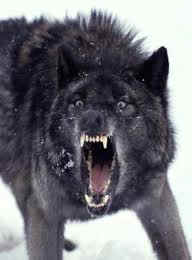
It has been theorized that Fenris Wolf might be one
of several beings to survive the cycles of destruction and rebirth
involving the Asgardians. In recent years, Fenris Work gained the
ability to take the form of a large wolf-like humanoid and helped Loki
to set in motion a revised version of Ragnarok in which all the
Asgardians died. However, Thor subsequently restored the Asgardians to
life; the Fenris Wolf's whereabouts are unrevealed.
Height: 15' (hind feet)
Weight: Indeterminate
Eyes: Red
Hair: None
Strength Level: Inapplicable. In humanoid form, Fenris Wolf possesses
superhuman strength enabling him to lift (press) around 50 tons under
optimal conditions.
Known Superhuman Powers: Fenris Wolf possesses the conventional physical
attributes of the Asgardian gods due to his ancestry, including
superhuman strength, speed, stamina, endurance and resistance to harm.
In wolf-form, his jaws can bite through tempered steel and his claws can
rend through solid stone. He can also shapeshift from lupine form into
werewolf form at will.
|
|
HYDRA
Real Name: Unknown, possibly Hydra
Occupation: Predator
Legal Status: Inapplicable
Identity: The general populace of Earth is unaware of the existence of
the Hydra except as a mythological character.
Other Aliases: None known
Place of Birth: somewhere in Arcadia (modern Greece)
Marital Status: None
Known Relatives: Typhon (father), Echidna (mother, deceased), Geryon
(uncle, deceased), Chrysaor (maternal grandfather), Calirrhoe (maternal grandmother), Cerberus,
Ladon,
Nemean
Lion, Orthrus (brothers),
Chimaera, Phaea,
Sphinx
(sisters),
Group Affiliation: None
Base of Operations: Lerna in Southern Argos in the 13th Century BC (now
part of modern Greece)
First Appearance: Thor I #356
History: The Hydra was a monstrous seven-headed dragon that terrorized
Ancient Greece. It was the spawn of Typhon, the eternal enemy of the Olympian
gods, and Echidna, the snake-goddess. After Typhon was imprisoned under Mount
Aetna after attacking the Gods of Olympus, Echidna fled to Arcadia where she
sired several progeny that featured both animal and human characteristics. This
trait might be linked to the fact that Echidna was the daughter of Chrysaor, a
son of Poseidon and
Medusa, one of the Gorgons who had been cursed by
Athena. It
has also been attributed to Calirrhoe, Chrysaor's wife, who could turn herself
into various animals. Born as a dragon, the Hydra terrorized much of Ancient
Greece until making a home in the swamps of Lerna where she grew to immense size
preying upon travelers through the region.
Around 1260 BC, Hercules fell under the subservience of King Eurystheus of
Mycenae, who sent him on several dangerous labors trying to kill him off as a
rival to his throne. Sent on his second labor to slay the Hydra, Hercules
quickly learned it grew two new heads for each one severed from its body. With
the help of his nephew, Iolaus, Hercules used heated brands to cauterize each
neck for every head he severed to prevent new heads from forming. Burning the
rest of the creature's body, he collected enough of its venom to dip his arrows
within and render them that much more potent. However, Eurystheus later realized
that Hercules had too much help from Iolaus in defeating the Hydra and refused
to count this as one of the labors, later replacing it with a much more
dangerous labor. Hera later granted the Hydra's name to a group of stars in the
sky, although later myths would claim the stars were the Hydra's image cast in
the heavens.
|
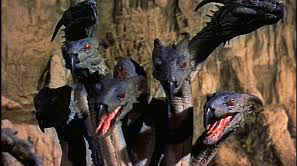
Despite its apparent demise, the Hydra reportedly returned to life to
terrorize Hercules and other heroes, but it is unknown if it was restored to
life by other gods or if its name was granted to other unrelated dragons. It
appeared again to attack Hercules and the Argonauts, who sliced off its venomous
heads off and sealed its wounds with the super-heated pitch used to seal the
hull of the Argo. It also seemed to appear in modern times to attack the
Fantastic Four. Hades restored it to life to attack the young demigod Percy
Jackson and Ares later used Hydra blood against Hercules. The Hydra's name has
since been used as the mantra of the covert terrorist organization known as
HYDRA.
Height: 50' (estimated length)
Weight: Indeterminate
Eyes: Black
Hair: None
Strength Level: Inapplicable
Known Superhuman Powers: The Hydra was a large dragon-type entity of
indeterminate size with seven heads at the end of several long individual necks,
vaguely resembling a mutation of a prehistoric plesiosaur or elasmosaurus. It
had extraordinary regenerative ability to replace limbs and even heads within
ten to fifteen seconds of loss. For each head that it lost, it could regenerate
two heads to replace the one which was lost. Its venom was particularly lethal,
but it was possibly vulnerable to fire since cauterizing its wounds from its
severed heads prevented extra heads from growing back. Considering it could lose
its heads so easily, it may not have had a very dense or hard external body to
protect it from harm.
|
|
JORMUNGARD
Real Name : Jormungardr (original spelling)
Occupation: Predator
Legal Status: Inapplicable
Identity: The general populace of Earth is unaware of the existence
Jormungard except as a mythological character.
Other Aliases: Jormungand, Midgard Serpent, Midgard Worm, World Serpent,
Place of Birth: possibly Ironwood Forest, Jarnivor (now part of Poland)
Marital Status: None
Known Relatives: Loki
(father), Angrboda (mother), Hela
(sister), Fenris
Wolf (brother),
Group Affiliation: None
Base of Operations: Mobile
First Appearance: Thor #127
History: Jormungard is a large serpent of extraordinary size native to the
realm of the Gods
of Asgard. According to myths, Jormungard was the son of the Loki and Angrboda
of a previous incarnation of Asgard and has survived nearly unscathed in the
repeating cycles of Ragnarok. Despite his godly parentage, Jormungard grew to be
increasingly serpentine in appearance, and after Odin
became aware of prophesies revealing Jormungard was a potential threat to
Asgard, he had Jormungard banished to the depths of the ocean where he grew
to immense size and possibly spawned many of the accounts of sea serpents
seen by mortal sailors. According to a prophecy, Jormungard and Thor are
fated to slay each other at Ragnarok, and Thor has tried several times to
prevent this prophesy from occurring, once trying to bait Jormungard with an
ox-head with the help of Hymir
to slay him, but Hymir became too frightened and cut Thor's fishing line.
Thor also encountered Jormungard disguised as a cat in the court of Utgard-Loki
as part of a lesson to teach the Asgardians they were not immune to
death.
In later incarnations of Asgard, Jormungard returned
usually as an ally or accomplice of Loki in his quests to claim the throne
of Asgard, including one plan to hold the Apples
of Immortality hostage. Jormungard also brutally attacked Thor after
Hela cast a curse that rendered him incapable of dying and incapable of
healing, but Thor still managed to defeat Jormungard while wearing a suit of
indestructible armor, beating Jormungard to a bloody pulp before the power
of Mjolnir turned the serpent-god to ethereal form. Whether Jormungard was truly
defeated or if he existed in some form in another dimension in
unrevealed.
|
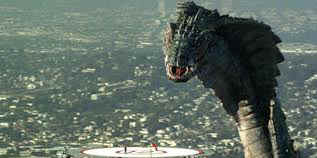
Height: Indeterminate
Weight: Indeterminate
Eyes: Red
Hair: None
Strength Level: Jormungard possessed immeasurable strength at a
level that has never been measured; his strength surpassed that of Thor who
has Class 100 level strength and can (lift) press well over 100 tons under
optimal conditions.
Known Superhuman Powers: Jormungard possessed the conventional physical
attributes of the Asgardian gods due to his ancestry, including
superhuman strength, speed, stamina, endurance and resistance to harm
but possibly at levels beyond any other Asgardian god. Jormungard also
carries a venom that is fatal to Asgardian Gods and may be similar to the
blood of the Hydra.
It has been theorized that Jormungard maybe capable of disguising his
appearance as he appeared as a cat to Thor in the court of Utgard-Loki, a
feat that is usually attributed to Utgard-Loki; however, it is known that
Jormungard often appears much larger on Earth than he does in Asgard.
Whether Jormungard can truly deceive others with his size or if this is attribute
between the differences between the realms of Asgard and Earth is unrevealed
|
|
KRAKEN
Real Name : Hafgufa ("sea mist")
Occupation: Predator
Legal Status: Inapplicable
Identity: The general populace of Earth is unaware of the existence of
the Kraken except as a mythological character.
Other Aliases: None known
Place of Birth: Unrevealed
Marital Status: None
Known Relatives: None
Group Affiliation: None
Base of Operations: The Greenland Sea, possibly Mobile
First Appearance: (historical) Saga of Orvar-Oddr (13th Century),
(modern) "The Kraken" by Lord Alfred Tennyson,
History: Not much is known about the creature known as the Kraken
except it was one of several oceanic beasts the Vikings and Ancient Norse feared
in their travels at sea. It was first mentioned in "The Saga of Orvar-Oddr,"
a 13th Century adventurer as he sailed from Norway to Greenland, who also
believed it to be the eternal rival of Lynbakr, ("heather back"), an
immense whale capable of swallowing whole ships. It was described in the Konunga
Skuggsja around 1250 as a huge powerful octopus that pulled ships down into the
sea and later documented by zoologist Carolus Linnaeus, although it disappears
from his later work. Linnaeus further believed it was random freak of nature, an
ordinary octopus that had somehow grown to great size. The poet, Lord Alfred
Tennyson, wrote his sonnet, "The Kraken," based on its legend. In
1782, malacologist Pierre de Monfort blamed the Kraken for the disappearance of
ten British war ships, but it is unrevealed if this theory is correct.
|
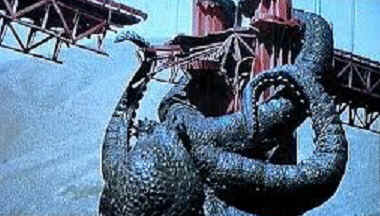
Height: 150' (estimated length)
Weight: Indeterminate
Eyes: Unrevealed
Hair: None
Strength Level: The Kraken possessed Class 100 level strength enabling it
to lift (press) over 100 tons under optimal conditions.
Known Superhuman Powers: The Kraken was a large eight-armed cephalopod
resembling an ordinary octopus, although one of extraordinary size and
possessing superhuman strength, stamina, endurance and resistance to injury.
It was powerful enough to wrap itself around the hull of Viking and British
sailing ships and pull them underwater where it could feast on the sailors
of these crafts. Its actual full attributes are unknown.
Note: In "Clash of the Titans"
(1980/2010), the Kraken was erroneously identified as the would-be
antagonist of the hero, Perseus,
and confused with Cetus, progeny of Tartarus and Gaea.
|
|
LADON
Real Name : Ladon
Occupation: Predator
Legal Status: Inapplicable
Identity: The general populace of Earth is unaware of the existence of
Ladon except as a mythological character.
Other Aliases: None known
Place of Birth: somewhere in Arcadia (modern Greece)
Marital Status: None
Known Relatives: Typhon (father), Echidna (mother, deceased), Geryon
(uncle, deceased), Chrysaor (maternal grandfather), Calirrhoe (maternal grandmother), Cerberus,
Nemean
Lion, Orthrus (brothers),
Hydra,
Chimaera, Phaea,
Sphinx
(sisters),
Group Affiliation: None
Base of Operations: Mount Atlas in Ancient Libya in the 13th Century BC (now
part of modern Morocco)
First Appearance: Sandman Special #1
History: Ladon was a huge dragon that existed in Ancient Greece. It was the spawn of Typhon, the eternal enemy of the Olympian
gods, and Echidna, the snake-goddess. After Typhon was imprisoned under Mount
Aetna after attacking the Gods of
Olympus, Echidna fled to Arcadia where she
sired several progeny that featured both animal and human characteristics. This
trait might be linked to the fact that Echidna was the daughter of Chrysaor, a
son of Poseidon and
Medusa, one of the Gorgons who had been cursed by
Athena. It
has also been attributed to Calirrhoe, Chrysaor's wife, who could turn herself
into various animals. Born as a dragon, Ladon was placed as a guardian to the
Garden of the Hesperides, which provided the golden fruit that gave the Olympians
their vitality. The garden was further attended by the Hesperides, minor
goddesses of the west and daughters of the Titan, Atlas,
who had been imprisoned nearby. The Hesperides were warmly visited by the
heroes, Perseus,
who arrived to retrieve the weapons to slay Medusa, and Hercules,
who arrived to take Golden Apples from the garden to take back to Greece on
his Eleventh Labor. Ladon was slain by Hercules in order to retrieve the
apples to finish his labor.
|
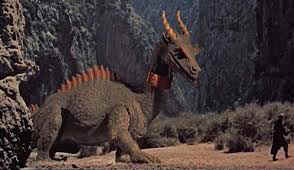
Height: 25' (estimated length)
Weight: Indeterminate
Eyes: Black
Hair: None
Strength Level: Unknown
Known Superhuman Powers: Ladon was a large dragon-type entity of
indeterminate size with several heads at the end of several long individual necks,
vaguely resembling a mutation of a prehistoric plesiosaur or elasmosaurus.
(According to myths, Ladon had over a hundred heads while he is typically
seen in art with one head.) Ladon possessing superhuman strength, stamina, endurance
and resistance to injury. In artwork, Ladon has alligator or crocodile-like
characteristics on a serpentine body. Not many of his attributes have been
revealed.
|
|
NEMEAN LION
Real Name : Unknown, possibly None
Occupation: Predator
Legal Status: Inapplicable
Identity: The general populace of Earth is unaware of the existence of
the Nemean Lion except as a mythological character.
Other Aliases: None known
Place of Birth: somewhere in Arcadia (modern Greece)
Marital Status: None
Known Relatives: Typhon (father), Echidna (mother, deceased), Geryon
(uncle, deceased), Chrysaor (maternal grandfather), Calirrhoe (maternal grandmother),
Cerberus,
Ladon,
Orthrus
(brothers), Chimaera,
Hydra,
Phaea, Sphinx
(sisters),
Group Affiliation: None
Base of Operations: Nemea in Northern Argos in the 13th Century BC (now
part of modern Greece)
First Appearance: Hercules III #1
History: The Nemean Lion was a ferocious lion that existed in Ancient Greece.
According to myths, it was the spawn of Typhon, the eternal enemy of the Olympian
Gods, and Echidna, the snake-goddess, who had sired many of the brood
that terrorized Ancient Greece. However, the Nemean Lion is said to have
been suckled by Hera,
the Queen of the Olympian Gods and the tutelary goddess of Argos, who then
gave the lion to Selene,
the moon-goddess to raise to adulthood. Fully mature, the Nemean Lion was
allowed to roam unfettered around Argos where it became a nuisance to the
Argives until it was trapped in its cave and slain by Hercules in his first
labor by choking it to death. Hercules appreciated the impervious hide of
the Nemean Lion that he skinned it and wore its hide as a trophy. Afterward,
Hera immortalized the memory of the Nemean Lion in the stars with a
constellation.
|

Height: 8' (hind legs)
Weight: Indeterminate
Eyes: Brown
Hair: Brown
Strength Level: The Nemean Lion possessed superhuman strength compared to
a male lion of its size, build and height enough to match Hercules who possesses
Class 100 strength.
Known Superhuman Powers: The Nemean Lion was a lion of extraordinary
size possessing superhuman strength, stamina, endurance and resistance to injury
due to its godly attributes. It also had powerful jaws for catching and
devouring prey and claws capable of rendering through stone and masonry. Its
hide was dense enough to repel arrows and spears rendering immune to weapons.
|
|
NIDHOGG
Real Name : Nidhoggr (original spelling)
Occupation: Predator
Legal Status: Inapplicable
Identity: The general populace of Earth is unaware of the existence of
the Nidhogg except as a mythological character.
Other Aliases: Nithogg, Nitthogg, Nithhog, Nidhug, Corpse Tearer, et al.
Place of Birth: Unknown
Marital Status: None
Known Relatives: Unknown
Group Affiliation: None
Base of Operations: Nastrond Shore in Hel
First Appearance: Thor I #336
History: Not much is known about the dragon known as Nidhogg.
According to myths, Nidhogg lives on the shore of Nastrond along the Gjoll
River where he feasts on the bodies of the dishonored dead as they wash up
in the afterlife. However, much like Jormungard,
Nidhogg was known to nibble at the roots of Yggdrasil, the World Tree, which
linked the Nine Worlds of Asgard. It is possible that Nidhogg may be the
same entity as Jormungard or its progeny, but this is uncertain.
|
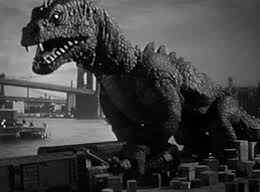
Height: 50' (estimated length)
Weight: Indeterminate
Eyes: Black
Hair: None
Strength Level: Inapplicable
Known Superhuman Powers: Nidhogg was a powerful dragon possessing
superhuman strength, stamina, endurance and and resistance to harm
comparable to the Gods of
Asgard. His full attributes are unrevealed.
|
|
ORTHRUS
Real Name: Orthrus
Occupation: Guardian
Legal Status: Inapplicable
Identity: The general populace of Earth is unaware of the existence of
the Orthrus except as a mythological character.
Other Aliases: Orthus (alternate spelling)
Place of Birth: Unknown location in Arcadia (now part of modern
Greece)
Marital Status: None
Known Relatives: Typhon (father), Echidna (mother, deceased), Geryon
(uncle, deceased), Chrysaor (maternal grandfather), Calirrhoe (maternal grandmother),
Cerberus,
Ladon,
Nemean
Lion (brothers), Chimaera,
Hydra,
Phaea, Sphinx
(sisters),
Group Affiliation: None
Base of Operations: Erytheia (now
part of modern Spain)
First Appearance: Clash of the Titans (1981)
History: Orthrus was a large two-headed dog that existed during the
Ancient Greek Empire. It was the spawn of Typhon, the eternal enemy of the Olympian
gods, and Echidna, the snake-goddess. After Typhon was imprisoned under Mount
Aetna after attacking the Gods of
Olympus, Echidna fled to Arcadia where she
sired several progeny that featured both animal and human characteristics. For
unknown reasons, Orthrus was taken by Geryon, Echidna's brother, to serve as
guardian and protector of his cattle which grazed in Erytheia west of
Greece.
|
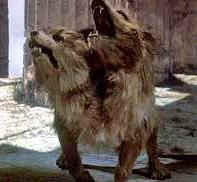
Height: 7' (estimated length)
Weight: Indeterminate
Eyes: Brown
Hair: Brown
Strength Level: Orthrus possessed superhuman strength compared to
a male wolf of its size, build and height enough to match Hercules who
possesses Class 100 strength.
Known Superhuman Powers: Orthrus was a powerful two-headed wolf possessing
superhuman strength, stamina, endurance and and resistance to harm
comparable to the Gods of
Olympus including jaws to could bite through and tear through tempered
steel. His full attributes are unrevealed.
|
|
SPHINX
Real Name: Unknown, possibly Sphinx
Occupation: Sentry/Predator
Legal Status: Inapplicable
Identity: The general populace of Earth is unaware of the existence of
the Sphinx except as a mythological character.
Other Aliases: None known
Place of Birth: Unknown location in Arcadia (now part of modern
Greece)
Marital Status: None
Known Relatives: Typhon (father), Echidna (mother, deceased), Geryon
(uncle, deceased), Chrysaor (maternal grandfather), Calirrhoe (maternal grandmother),
Cerberus,
Ladon,
Nemean
Lion, Orthrus
(brothers), Chimaera,
Hydra,
Phaea, (sisters),
Group Affiliation: None
Base of Operations: Mount Phicium near Thebes, Greece in the 13th Century BC
First Appearance: "Percy Jackson and the Battle of the
Labyrinth" by Richard Riordan
History: The Sphinx was the spawn of Typhon, the eternal enemy of the Olympian
gods, and Echidna, the snake-goddess. After Typhon was imprisoned under Mount
Aetna after attacking the Gods of
Olympus, Echidna fled to Arcadia where she
sired several progeny that featured both animal and human characteristics. Among
her progeny, only the Sphinx and Phaea had outward human characteristics. Born
with the hindquarters of a lion and large wings, the Sphinx was sent to Thebes
by Hera,
the Queen of the Olympian
Gods, during the regency of King Creon to deter his rule in the absence of
King Laius off at war. During his rule, the Sphinx appeared often on the walls
of Thebes to pose a riddle then carry off and devour anyone, such as Creon's son
Haemon, who failed to answer correctly. She also appeared on the road to Thebes
to harass to devour travelers who failed to answer her riddle. She was
eventually dispatched by Oedipus, the son of Laius, who after managing to answer
her riddle, caused her to take her own life. Her name was later lent by the
Greeks to the Temple of Harmachis near Cairo, Egypt.
|

Under unresolved circumstances, the Sphinx has turned up
alive as an antagonist to the demigod,
Percy Jackson,
but whether she was restored to life
or survived her death is unrevealed.
Height: 7' (hind legs)
Weight: 355 lbs.
Eyes: Red
Hair: Black
Strength Level: The Sphinx possessed superhuman strength comparable to
Olympian goddesses and could lift (press) around 25 tons.
Known Superhuman Powers: The Sphinx possessed the conventional
attributes of the Olympian gods, including superhuman strength, speed,
stamina and resistance to injury. She also had two large wings that came
from her back and allowed her to fly and carry off her victims. Her full
range and maximum elevation of her ability to fly is unrevealed.
|
|
VRITRA
Real Name: Ahi Vritra
Occupation: God of drought
Legal Status: Citizen of Patala
Identity: The general populace of Earth is unaware of the existence of
the Vritra except as a mythological character.
Other Aliases: Ahi Vrita Ahi Vrtra, Vrita, Vrtra
Place of Birth: Unrevealed
Marital Status: Unknown
Known Relatives: Kasyapa (father), Kadru (mother), Vinata (aunt),
Garuda (cousin), Vasuki (son), Purusha (grandfather), Gaea
(mother, alias Aditi),
Group Affiliation: None
Base of Operations: Unknown, possibly Mobile
First Appearance: Vritra has yet to appear in the Marvel or DC
Universe.
History: Vritra is a member of the Danavas or Naga-Gods of the Gods
of India. According to myths, Vritra was the son of Kasyapa, one of the
Adityas or ancestral gods of the Hindu Gods. Kasyapa took the daughters of
Daksha as his wives, and among them, the sisters, Vinata and Kadru conspired
to a child that outshone the other. Diti sired the Danavas, who appeared at
birth in the form of snakes, but Vinata sired Garuda, who took the form of
an eagle and devoured all of the sons of Vinata.
Vritra was one of the sons of Kadru who escaped Garuda and
became one of the Asuras, the gods of the underworld at war with the Hindu
Gods. In human form, Vritra had three faces for studying, eating and
watching, but he could also take the form of a giant serpent resembling a
cobra. Kadru further enchanted him to be impervious to weapons of metal,
wood and stone and incapable of being killed during the day or night when it
was wet and dry. The Hindu Gods grew to fear Vritra who devoured the Apsaras
or river-goddesses and curled up around Mount Himavat (modern Mount Everest)
preventing rain from reaching earth and causing a drought. Vishnu,
one of the Adityas, however, got
Indra,
the thunder-god, drunk on soma, the sacred drink of the Hindu gods, and in
his drunken state, Indra managed to slay Vritra by drowning him in the foam
of the ocean at dawn the cutting Vritra open to free the Apsaras still alive
within him to create rain.
|
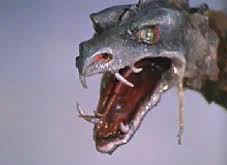
Vritra's son, Vasuki, is known as the sacred mount of
Vishnu, who became ruler of the Hindu Gods.
Height: 7' 0"(humanoid), Indeterminate
(serpent)
Weight: 475 lbs. (humanoid), Indeterminate (serpent)
Eyes: Black
Hair: Black
Unusual Physical Features: In human form, Vritra
has three faces.
Strength Level: Vritra possessed Class 100 level strength enabling him to
lift (press) over 100 tons.
Known Superhuman Powers: Vritra possessed the conventional
attributes of the Hindu Gods, including superhuman strength, endurance,
stamina and resistance to injury, all bolstered mystically by Vinata's
spells. He also had the ability to shapeshift into other forms, mostly that
of an immense cobra-like serpent large enough to coil around the top of
Mount Everest.
|







